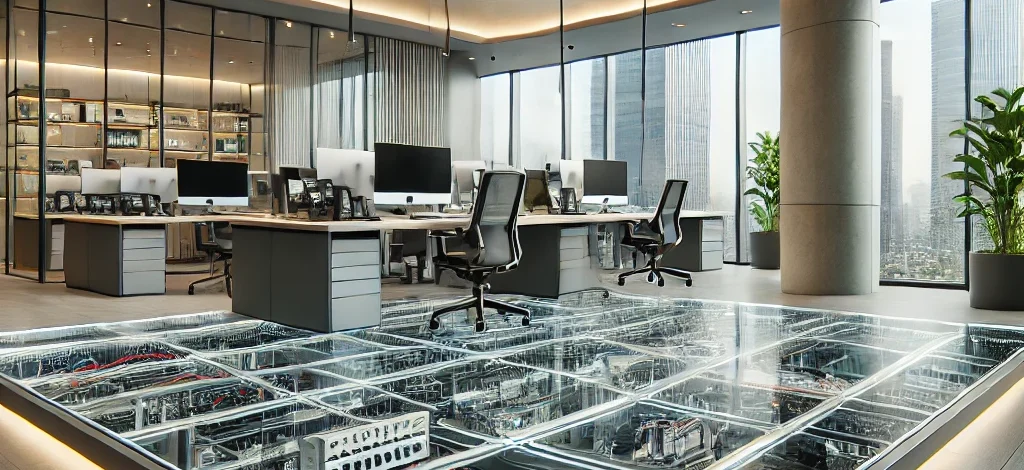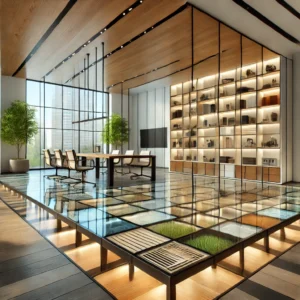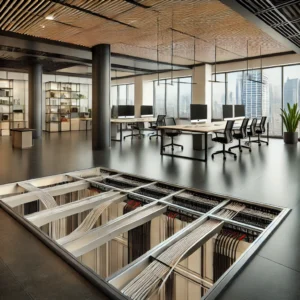Economic Advantages of Using Raised Flooring in Bangladesh
Raised flooring systems in Bangladesh offer significant economic benefits, including enhanced cable management, improved airflow, and long-term cost savings. These systems are ideal for modern infrastructures such as offices and data centers, providing flexibility and efficiency that contribute to reduced operational expenses and increased productivity.
In the evolving landscape of Bangladesh’s infrastructure, raised flooring systems have emerged as a pivotal element in modern construction, particularly in commercial spaces like offices, data centers, and IT facilities. These systems consist of elevated floor panels supported by a grid of pedestals, creating a concealed space for essential services such as electrical wiring, data cables, and HVAC systems. This innovative design not only enhances the functionality of a workspace but also offers substantial economic advantages that align with the goals of efficiency and cost-effectiveness.
Enhanced Cable Management and Reduced Maintenance Costs
One of the foremost economic benefits of raised flooring is its superior cable management capabilities. By providing a dedicated space beneath the floor surface, organizations can neatly organize and conceal electrical and data cables, reducing clutter and minimizing the risk of damage. This organized setup leads to decreased maintenance requirements and costs, as technicians can easily access and service cables without disrupting daily operations. The streamlined infrastructure also reduces the likelihood of accidental disconnections or electrical hazards, contributing to a safer and more efficient work environment.
Improved Airflow and Energy Efficiency
Raised flooring systems play a crucial role in enhancing airflow management within a building. The underfloor space serves as a plenum for distributing cooled air, which is particularly beneficial in data centers and server rooms where temperature control is vital. This method of air distribution ensures uniform cooling, reducing the strain on HVAC systems and leading to significant energy savings. By optimizing cooling efficiency, businesses can lower their energy consumption and, consequently, their utility expenses, resulting in a more sustainable and cost-effective operation.
Flexibility and Scalability
The modular nature of raised flooring systems offers unparalleled flexibility and scalability. As businesses grow and technology evolves, the need to reconfigure office layouts or upgrade equipment becomes inevitable. Raised floors allow for easy modifications without the need for extensive renovations, enabling organizations to adapt quickly to changing requirements. This adaptability not only saves on renovation costs but also minimizes downtime, ensuring continuous productivity and reducing the financial impact of transitions.
Aesthetic Appeal and Professionalism
Beyond functional advantages, raised flooring contributes to the aesthetic appeal of a workspace. By concealing cables and mechanical systems, these floors create a clean and uncluttered environment that reflects professionalism. A well-organized and visually appealing workspace can enhance employee morale and impress clients, potentially leading to increased business opportunities. Investing in the appearance of a workspace is, therefore, an investment in the company’s brand and reputation, which can have long-term economic benefits.
Constructed from robust materials such as steel and calcium sulfate, raised flooring systems are designed for durability and longevity. Their resilience to heavy loads and high foot traffic ensures that they maintain their structural integrity over time, reducing the frequency and costs associated with repairs or replacements. This durability translates to a lower total cost of ownership, making raised flooring a financially sound investment for organizations aiming for sustainable infrastructure solutions.
Specifications Table: Economic Advantages of Using Raised Flooring in Bangladesh
| Specification | Details |
|---|---|
| Panel Material | Steel, Aluminum, Calcium Sulfate |
| Load Capacity | 500 – 1,200 kg/m² |
| Height Adjustment | 5 – 50 cm |
| Weight | 15 – 25 kg/m² |
| Fire Resistance | Up to 2 hours |
| Surface Finish | HPL, Vinyl, Antistatic Coating |
| Airflow Options | Perforated and Solid Panels |
| Durability | 10–20 years |
| Sound Insulation | Up to 20 dB |
| Installation Time | 7–15 days for 1,000 sq. meters |
| Environmental Impact | Eco-Friendly Materials Available |
| Warranty | 5–10 years |
| Cost Range | BDT 1,500–3,500/m² |
| Applications | Data Centers, Offices, Control Rooms |
| Maintenance Frequency | Annually |
-
What is the primary purpose of raised flooring systems?
Raised flooring systems are designed to create a concealed space for housing electrical wiring, data cables, and HVAC systems, leading to improved organization, safety, and efficiency in commercial environments.
-
How does raised flooring contribute to energy savings?
By utilizing the underfloor space as a plenum for air distribution, raised flooring enhances cooling efficiency, reducing the workload on HVAC systems and leading to lower energy consumption.
-
Can raised flooring systems support heavy equipment?
Yes, raised flooring systems are engineered to support substantial loads, with load capacities ranging from 500 to 1,200 kg/m², making them suitable for heavy equipment commonly found in data centers and industrial settings.
-
Are raised flooring systems customizable to match interior designs?
Absolutely. Raised flooring panels are available in various surface finishes, including HPL, vinyl, and antistatic coatings, allowing businesses to select options that align with their interior design preferences.
-
What is the typical lifespan of a raised flooring system?
Constructed from durable materials, raised flooring systems typically have a lifespan ranging from 10 to 20 years, depending on usage and maintenance practices.
Why Choose Raised Flooring in Bangladesh
Opting for raised flooring systems in Bangladesh is a strategic decision that aligns with the country’s growing emphasis on modernizing infrastructure. These systems offer a multitude of economic advantages, including reduced maintenance costs, energy savings, and flexibility in workspace design. By investing in raised flooring, businesses can enhance operational efficiency, create aesthetically pleasing environments, and ensure scalability for future growth, all of which contribute to a stronger bottom line.
Pros and Cons Table: Economic Advantages of Using Raised Flooring in Bangladesh
|
|
|
|



